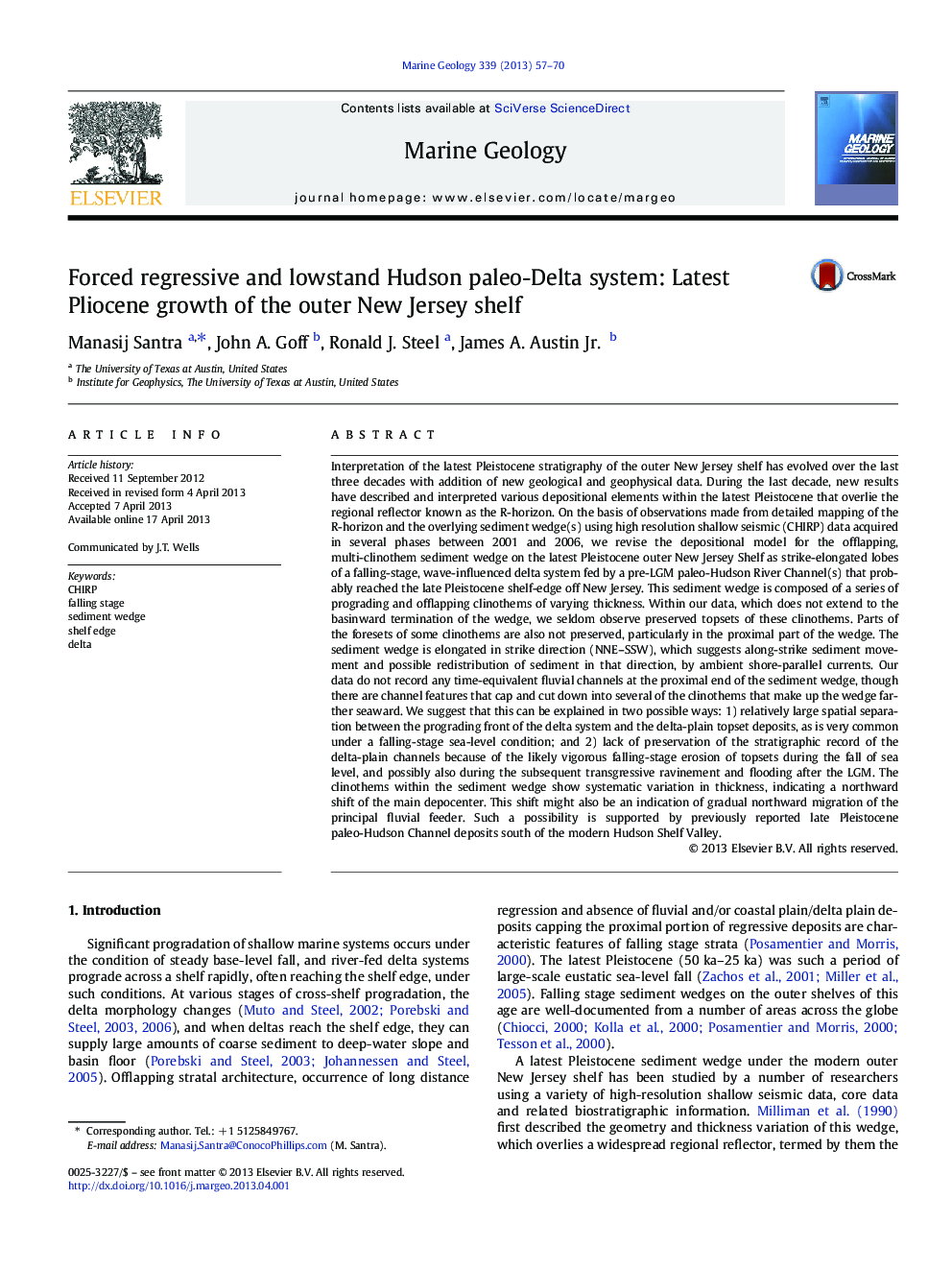| کد مقاله | کد نشریه | سال انتشار | مقاله انگلیسی | نسخه تمام متن |
|---|---|---|---|---|
| 4718492 | 1639113 | 2013 | 14 صفحه PDF | دانلود رایگان |

• Study of Pleistocene sediment-wedge under New Jersey outer shelf using CHIRP data
• The sediment-wedge was interpreted as a set of forced regressive deltaic clinothems.
• Foresets show increase in height and gradient as the shelf-edge is approached.
• Previously undetected channel-like features from topsets of the distal clinothems
• Northward migration of fluvial sediment feeder over latest Pleistocene
Interpretation of the latest Pleistocene stratigraphy of the outer New Jersey shelf has evolved over the last three decades with addition of new geological and geophysical data. During the last decade, new results have described and interpreted various depositional elements within the latest Pleistocene that overlie the regional reflector known as the R-horizon. On the basis of observations made from detailed mapping of the R-horizon and the overlying sediment wedge(s) using high resolution shallow seismic (CHIRP) data acquired in several phases between 2001 and 2006, we revise the depositional model for the offlapping, multi-clinothem sediment wedge on the latest Pleistocene outer New Jersey Shelf as strike-elongated lobes of a falling-stage, wave-influenced delta system fed by a pre-LGM paleo-Hudson River Channel(s) that probably reached the late Pleistocene shelf-edge off New Jersey. This sediment wedge is composed of a series of prograding and offlapping clinothems of varying thickness. Within our data, which does not extend to the basinward termination of the wedge, we seldom observe preserved topsets of these clinothems. Parts of the foresets of some clinothems are also not preserved, particularly in the proximal part of the wedge. The sediment wedge is elongated in strike direction (NNE–SSW), which suggests along-strike sediment movement and possible redistribution of sediment in that direction, by ambient shore-parallel currents. Our data do not record any time-equivalent fluvial channels at the proximal end of the sediment wedge, though there are channel features that cap and cut down into several of the clinothems that make up the wedge farther seaward. We suggest that this can be explained in two possible ways: 1) relatively large spatial separation between the prograding front of the delta system and the delta-plain topset deposits, as is very common under a falling-stage sea-level condition; and 2) lack of preservation of the stratigraphic record of the delta-plain channels because of the likely vigorous falling-stage erosion of topsets during the fall of sea level, and possibly also during the subsequent transgressive ravinement and flooding after the LGM. The clinothems within the sediment wedge show systematic variation in thickness, indicating a northward shift of the main depocenter. This shift might also be an indication of gradual northward migration of the principal fluvial feeder. Such a possibility is supported by previously reported late Pleistocene paleo-Hudson Channel deposits south of the modern Hudson Shelf Valley.
Journal: Marine Geology - Volume 339, 1 May 2013, Pages 57–70